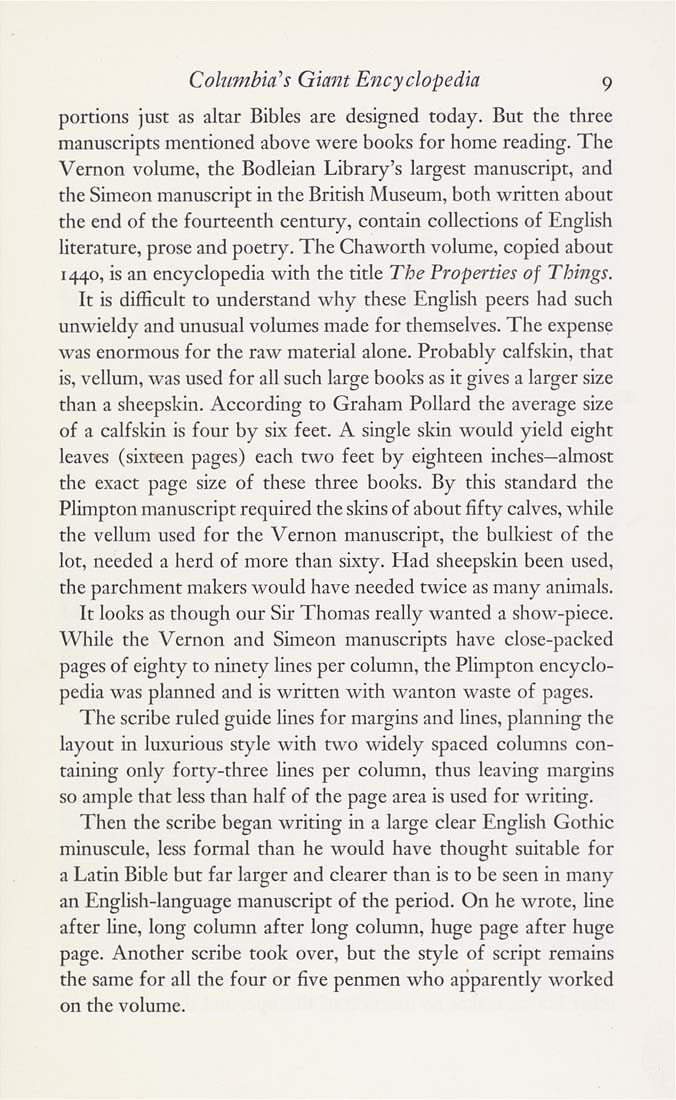Columbia Library columns (v.2(1952Nov-1953May))
(New York : Friends of the Columbia Libraries. )
|
||
|
|
|
|
| v.2,no.3(1953:May): Page 9 |

Columbians Giant Encyclopedia 9 portions just as altar Bibles are designed today. But the three manuscripts mentioned above were books for home reading. The Vernon volume, the Bodleian Library's largest manuscript, and the Simeon manuscript in the British Museum, both written about the end of the fourteenth century, contain collections of English literature, prose and poetry. The Chaworth volume, copied about 1440, is an encyclopedia with the title The Properties of Things. It is difficult to understand why these English peers had such unwieldy and unusual volumes made for themselves. The expense was enormous for the raw material alone. Probably calfskin, that is, vellum, was used for all such large books as it gives a larger size than a sheepskin. According to Graham Pollard the average size of a calfskin is four by six feet. A single skin would yield eight leaves (sixteen pages) each two feet by eighteen inches—almost the exact page size of these three books. By this standard the Plimpton manuscript required the skins of about fifty calves, while the vellum used for the Vernon manuscript, the bulkiest of the lot, needed a herd of more than sixty. Had sheepskin been used, the parchment makers would have needed twice as many animals. It looks as though our Sir Thomas really wanted a show-piece. While the Vernon and Simeon manuscripts have close-packed pages of eighty to ninety lines per column, the Plimpton encyclo¬ pedia was planned and is written with wanton waste of pages. The scribe ruled guide lines for margins and lines, planning the layout in luxurious style with two widely spaced columns con¬ taining only forty-three lines per column, thus leaving margins so ample that less than half of the page area is used for writing. Then the scribe began writing in a large clear English Gothic minuscule, less formal than he would have thought suitable for a Latin Bible but far larger and clearer than is to be seen in many an English-language manuscript of the period. On he wrote, line after line, long column after long column, huge page after huge page. Another scribe took over, but the style of script remains the same for all the four or five penmen who apparently worked on the volume. |
| v.2,no.3(1953:May): Page 9 |







